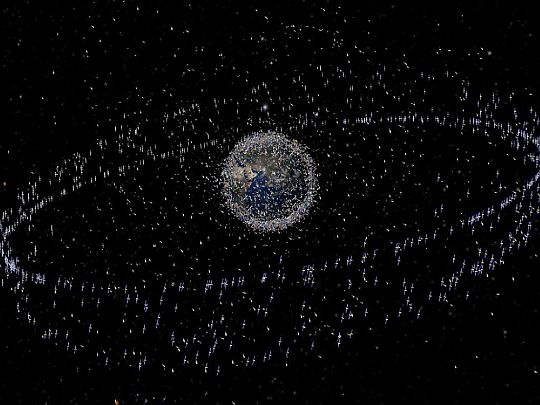After the collision of two polar-orbit satellites this week, it is worth the time to take a look at just how crowded the ‘technosphere’ is getting. This graphic presents an interesting perspective of the situation. But, in reality, if the the relative size of satellites in this picture were in the same scale as the planet, none of them would occupy even a single pixel – that is to say, they would be invisible. Click for large image.
From today’s NASA Image of the Day:
The launch of the first artificial satellite by the then Soviet Union in 1957 marked the beginning of the utilization of space for science and commercial activity. During the Cold War, space was a prime area of competition between the Soviet Union and the U.S.
In 1964 the first TV satellite was launched into a geostationary orbit to transmit the Olympic games from Tokyo. Later, Russian launch activities declined while other nations set up their own space programs. Thus, the number of objects in Earth orbit has increased steadily — by 200 per year on average.
The debris objects shown in the images are an artist’s impression based on actual density data. However, the debris objects are shown at an exaggerated size to make them visible at the scale shown.
Image Credit: European Space Agency


First thing that pops into my mind – “Fuzzy Nuts”
Earth is a metallic-fuzzy nutted planet surrounded by a ring of carpet tacks. I was hoping to see breasts in this like on all my other Rorshach tests but it just didn’t happen.
I was seeing the old toy where you could arrange shavings of iron to render hair or whiskers on the little cartoon inside the plastic. Couldn’t see any boobs here, although I see plenty in Congress.
p.s. Damsel says “You talk purdier than a two-dollar whore.”
Awwwwwwww you make me blush